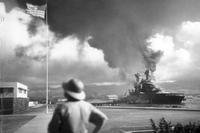NATO leaders, speaking at the Warsaw Summit 2016, pledged to increase troop strength on Europe's Eastern flank but offered few details about the four-battalion strong force to deter Russian aggression.
NATO Secretary General Jens Stoltenberg made strong references on Friday strengthening military presence in Lithuania, Latvia, and Estonia as well as in Poland.
"Strong defense and strong deterrence is the core task of NATO, and we are adapting the Alliance to new threats and new challenges," he said in a recent press release.
"We will decide to increase our forward presence in the eastern part of the Alliance with four new battalions, multinational robust battalions and they will send a clear message that an attack on one Ally will be an attack on the whole Alliance."
But when asked to elaborate on the plan, Stoltenberg offered few details except to say that the four battalions "will be multinational battalions" and that they "are only one element in a broader response from NATO."
"We have tripled the size of the NATO Response Force to 40,000 troops with a Spearhead Force at its core able to move within a matter of days," Stoltenberg said.
"We have set up small new headquarters in Poland and other countries in the eastern part of the Alliance which are important for planning, for exercises, but also to facilitate reinforcements if needed. And we have also decided to have more pre-positioned equipment and supplies, and also to have more exercises, sped up our decision-making. So we have done a lot of different things."
The United States announced Friday it will deploy 1,000 troops to Poland as part of broader NATO efforts to reassure former Communist eastern member states fearful of a more assertive Russia, according to Agence France Presse.
President Barack Obama said the troops would serve "shoulder to shoulder" with Polish forces. They are expected to conduct frequent training missions and will be "mechanized", meaning infantry units equipped with armored personnel carriers, according to Agence France Presse.
Britain said earlier this week it would commit 650 troops to a separate battalion, and fellow NATO allies Germany and Canada have also pledged to stand up their own units.
U.S. Military officials from U.S. European Command and the Army's G-3/5/7 are scheduled to testify before the House Armed Services Committee's Oversight and Investigations Subcommittee Wednesday on the European Reassurance Initiative or ERI.
The President's Budget request for FY 2017 includes a quadrupling in ERI funding over 2016 levels to approximately $3.42 billion, according to a White House press release.
"Fiscal Year 2017 ERI funding levels highlight a shift from assurance to deterrence and will permit more rotational U.S. forces in Europe, more training and exercises with our allies, more prepositioning and warfighting gear and infrastructure improvements to help support the U.S. and NATO allies shift towards a more credible defense posture," according to the release.
In 2017, the ERI will expand the scope of 28 joint and multinational exercises, which annually train over 18,000 U.S. personnel alongside 45,000 NATO allies and Partnership for Peace personnel across 40 countries, the release states.
"Notably, ERI does not fund an increase in the number of U.S. troops permanently stationed in Europe, but it will support the presence of additional rotational forces that help us meet our collective defense obligations to NATO allies," according to the release.
But using ERI funds, the United States has been able to increase the frequency and length of U.S. deployments to Europe such the deployment of 1st Brigade Combat Team, 3rd Infantry Division in 2015 and 2016.
"When in Europe, the brigade forward deploys units from the Baltic States to Bulgaria and also conducts training in the Republic of Georgia," according to the release. "During the brigade's current six-month deployment, it brought all its units together in Poland to participate in Exercise Anakonda."
The Pentagon also recently announced it plans to deploy an armored brigade combat team to Eastern Europe in February. That plan essentially calls for the constant presence of a third brigade in Europe. Two are already permanently stationed in Europe -- a Stryker brigade and an airborne brigade. And now a brigade will rotate in and out on a continual basis, according to the Associated Press.
--Matthew Cox can be reached at matthew.cox@military.com.



























